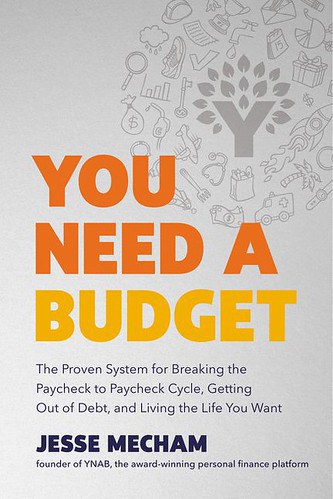The 4% Rule is the Easy Answer to “How much do I need for retirement?”

The 4% rule, or the 4% safe withdrawal rate or just “The SWR” is a concept in the early retirement world.
We’ll discuss this (and then flatten it) later. Let’s first define the safe withdrawal rate:
The safe withdrawal rate is the maximum amount you can withdraw from your retirement funds to ensure that they don’t expire in your lifetime.
Many people find it difficult to predict.
You don’t really know how the economy will affect your retirement savings, nor do you know what inflation rate will be throughout your life. Will a dozen eggs cost you $6.00 or $60 when you reach 65? How can we know the amount of money we’ll need in retirement?
Answers to this question can vary greatly.
Financial beginners (about 95 percent of the population), tend to throw out numbers randomly between 5 and 100 million dollars.
Most financial advisers, who aren’t Mustachians, will tell you it depends on the income you earned before retiring . (With the implicit assumption that most of your earnings are spent) The answer is between 2 and 10 millions.
The answer that comes closest to the correct answer is: Multiply your annual spending by between 20 and 30, and you’ll get your retirement number.
You can use 25 to represent a safe withdrawal rate of 4%, my personal favorite.
Where does this magical number come from exactly?
Imagine that you’ve invested your retirement savings in stocks and other assets. Before inflation, they pay dividends and increase in value at a rate of 7% annually. The average inflation rate is 3%, which leaves you with only 4% of your money to spend.
Let’s clarify that statement. I can hear the whines and keyboards rattling already. It’s true: this is a simplified and idealized version.
Stocks and inflation fluctuate every year. In the past, huge things happened over a multi-decade time period. The Great Depression. World Wars, Vietnam and Cold War. The abandonment the gold standard in US currency, and years of inflation of over 10% and interest rates of 20%. Recent events include the Great Financial Crash and the halving of stock and real estate values.
If you retired in 1921 with a nest egg largely made up of stocks, you’d have seen a huge stock run-up during the first eight years after retiring. By the time 1929 hit and the Great Depression began, you would be so wealthy that the turmoil in the streets wouldn’t even register from your rosewood paneled tearoom.
If you had retired in early 2000 and held stocks, your savings would have dropped dramatically, along with the low dividend yields. Your’stash could have been in a scary situation in the beginning, and then again in 2009. What if you retired in early 2000 and held stocks? Your savings would have dropped dramatically, along with low dividend yields.
The order of the booms and crashes is important. You want to achieve your magic retirement age just before a long, booming period of stock prices that are reasonable and nice. This will ensure your retirement is a success. You can’t know these things ahead of time. How do we know the answer?
We are lucky that Early Retirement Ninjas did the hard work for us. They looked at what might have happened to a hypothetical retiree who had spent 30 years between 1925-1955, then 1926-1956 and 1927-1957.
This hypothetical retiree was given a mix of 50% stocks and half 5-year US government bond, which is a sensible asset distribution. They then forced the retiree, starting at a certain percentage, to spend progressively more of his portfolio every year.
The Trinity Study was a simple, but important, series of calculations. It has since been updated, tweaked and reported upon, and is still a topic of much debate. Wade Pfau has a reasonable opinion in the industry. He created this useful chart that shows what the maximum withdrawal rate for different retirement years would have been.
You can see that the 4% figure is actually a worst case scenario for the 65 years covered by the study. Many years, retirees were able to spend 5% of their savings or more each year and still end up with a surplus.
I want to make a point that is very important: according to this study, “successful” means not going bankrupt during the 30-year test period. For people like me and you who are planning to retire in 60 years, this would not be considered successful. We want our money last longer than 30.
The math is interesting in this case: There is not much difference between a 30 year period and an unlimited year period when it comes to determining the life of your money. This is similar to a 30-year loan, where the majority of your payments are interest. If you reduce your monthly payment by $199, you will have a mortgage that takes 1000 years to repay. If you increase the monthly payment by just a few hundred dollars, it will take 15 years to pay off.
We’re enjoying the 4% rule so far, right? I still get complaints every time I bring it up. Here are a few examples:
- The trinity analysis is based on an anomaly of prosperity: the United States in its boom years. You can’t predict such good times into the future because we are about to enter the Doom Years.
- The cheap fossil fuels were the basis for economic growth and stock appreciation. What will it look like when Peak Oil comes? ?
- It’s impossible to apply a single rule that fits all to something so diverse as an economy or a person’s life. The cost of my health could increase! Hyperinflation may strike!
- There is still a risk of portfolio failure even at a withdrawal rate of 4%. This means that I will be out of money and homeless in my later years. I suggest doubling your savings and opting for a 2% SWR, because it’s a safe bet.
- It’s all wrong! Waaah, waaah!

It’s all good. There are many solid economic analyses which I think can better argue the points made above. However, I am not clever or patient enough to recreate them. Pessimists can enjoy their pessimism, and write about it in their blogs.
We can eliminate the unprovable arguments by creating our own list of powerful points.
The trinity analysis assumes that a retired person will:
- Never earn more money by working part-time or through self-employment
- Never collect a dollar of social security or other pension plans
- Never adjust your spending to reflect economic realities like a recession.
- Never substitute products to compensate for price fluctuations or inflation (e.g., move closer to your destination during a spike in oil prices or switch to almondmilk in the case of an embargo on dairy milk).
- Never collect inheritances from parents or other relatives
- Spending less as you age is not something that most people do, according to research.
They are, in short, assuming that they’re a bunch drooling Complete Antimustachians. We are Mustachians and have a much more flexible lifestyle. We have built a safety margin that is larger than the average retirement plan.
Now that we are feeling confident about the 4% rule, let’s make sure you understand the importance of the rule:
Planning for a 4% Safe Withdrawal Rate is the safest method to save for retirement.
Multiply your annual expenditure by 25 to get the real-life equivalent. This is the maximum amount you’ll need to retire. A $25,000 spender like me needs $625,000. I have more than enough, and various safety margins for my lifestyle. So, all is well.
If you can do it without undue risks, and if you can use your skills to make money in the future, I would even recommend a SWR of 5%. You can retire with $500k if you reduce your expenses to $25k. You can then use the methods in First Retire, Then Get Richto increase your safety margin as you age (and to effectively decrease your withdrawal rates).
There’s no point in debating. Saving 25 times your annual expenses, or 4% of your income is a good goal. You may find that your annual expenses are vanishing, making it easier to achieve (as demonstrated in the shockingly easy math behind early retirement). You need not worry.
If you want to go even further with your numbers, visit the FIREcalc site. You can adjust variables, just like you would with your own Trinity Study Machine (look at tabs on the top of the screen). The data I used in the link is:
- 500,000 portfolio
- Spending 25,000 per year (5% withdrawal rate)
Histoically, the success rate of a retirement plan such as this over 60 years is only 45%.
If you do, then:
- Social Security benefits of up to $8,000 per annum starting in 25 years
- The “Bernicke Reality Retirement plan” is a way to reduce spending with age.
- Only $3,000 per annum in fooling around income
Already, you have a success rate of over 90%. You can achieve 100% success by adding another $100 or $200 per month, without referring to any of the other bullet points.
Finally, the article on Safe Withdrawal rate is here.
The rule is scary and dangerous in the hands of financial babies. In the hands of Mustachians nothing is frightening. A 4% withdrawal plan is like a bulletproof limo that you can take all the way to Mr. Money Mustache’s house for the party.







+ There are no comments
Add yours